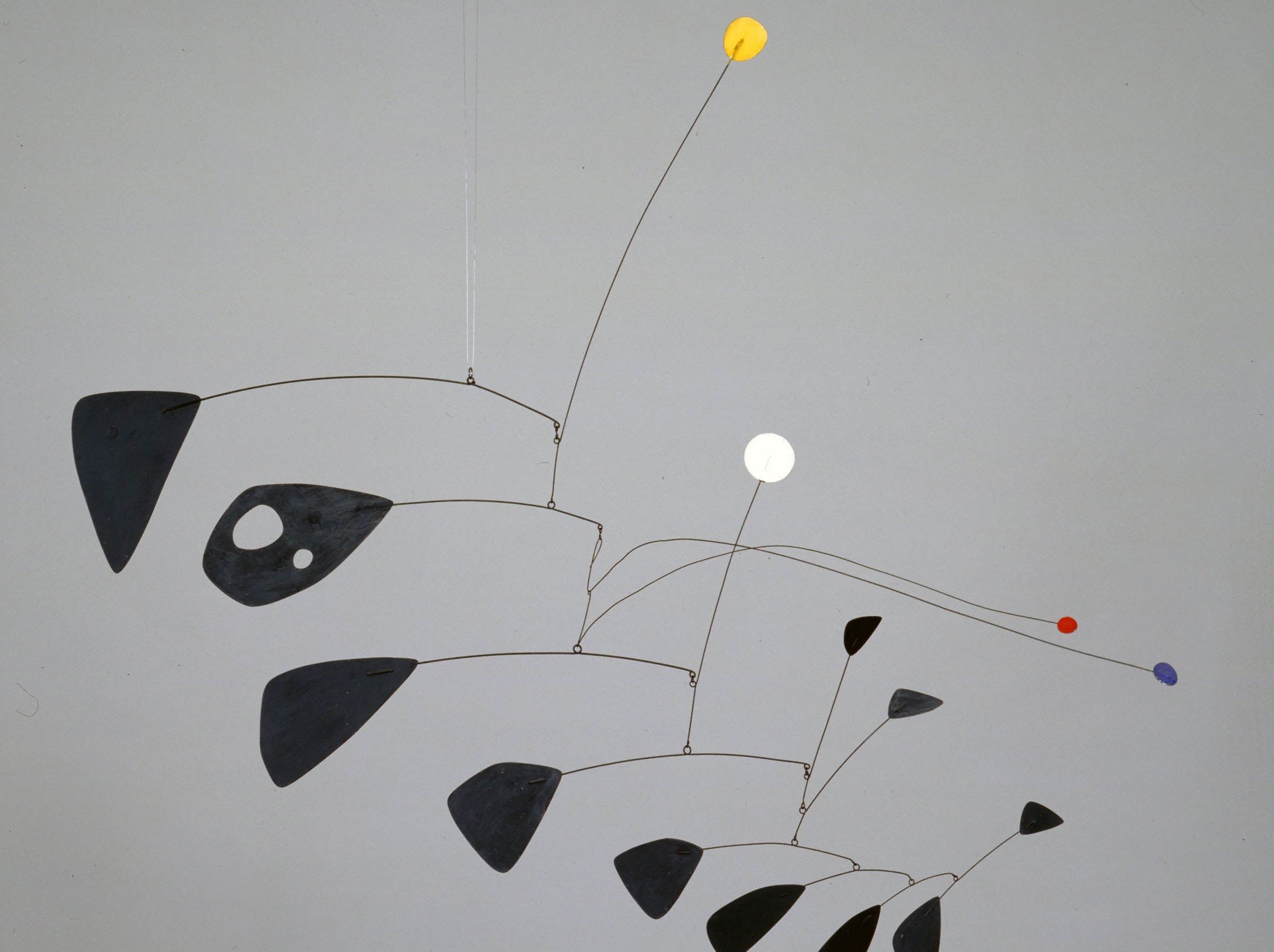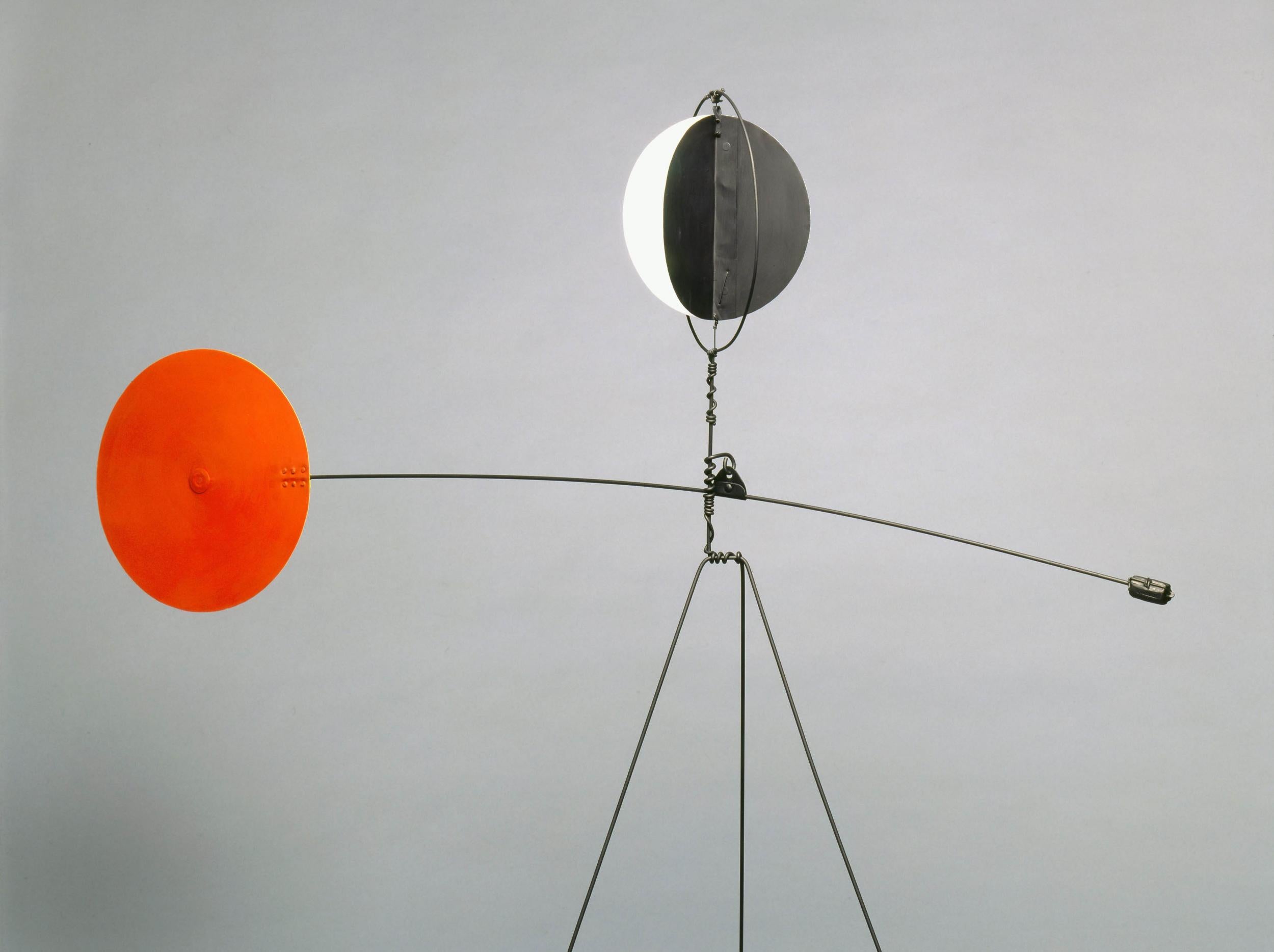Alexander Calder: The mechanical engineer and his pioneering mobiles
Claudia Pritchard traces the evolution of Alexander Calder’s pioneering mobiles

Take a good look at the removal team, next time you move to a new address: you never know who’s behind that wardrobe gliding down the stairs. When in the 1960s, a bunch of creative artists in New York looked at ways to make ends meet, since painting, sculpting and composing alone were not enough, they set up a firm of house-movers. The minimalist composers Philip Glass and Steve Reich and the photographer Chuck Close were among the hard-up friends who sculptor Richard Serra hired for Low-Rate Removals, artists whose advanced spatial awareness can only have been an advantage when it came to steering a sideboard.
Somewhere across town, Mark Rothko paid the rent by teaching in elementary school. David Smith worked at the Studebaker automobile factory, and brought to his sculpture the construction and materials of his former livelihood.
Dan Flavin, whose monuments and painterly effects were created with fluorescent strip lighting, worked in meteorology in the war, and later as a museum custodian: what better preparation for creating light spectacles – an Aurora Borealis in every gallery – combined with an awareness of how visitors look at and react to museum exhibits? Later, Jeff Koons had an early vision of the wealth that would later follow his art, when he worked as a commodities broker.

Paul Gauguin started out as a stockbroker. Francis Bacon was an interior designer – an oppressive sense of the room underpins his often claustrophobic portraits. But perhaps the outstanding example of an artist whose early career informed what came next is Alexander Calder, the mechanical engineer who invested in his art the personal, first-hand knowledge of materials and forces that made his mesmerising mobiles not only the first but arguably still the best sculptures of their kind.
As befits an artist whose work weaves and rotates in intriguing permutations, Calder started out not in a scientific home, but an artistic one. His father and grandfather were sculptors, his mother a painter, and as a child in Philadelphia art came naturally to him. “He showed artistic talent as a child,” says Ann Coxon co-curator of Alexander Calder: Performing Sculpture, which opens at Tate Modern, London, next week. “He was always making things and fiddling with things.” But in 1915 Calder went to study for a degree in mechanical engineering at the Stevens Institute of Technology in Hoboken, New Jersey. “He did a number of jobs after graduation in 1919, but in the early 1920s he finally gave in to the artistic urge and went back to study art, and worked as an illustrator.”
Calder then followed the route that had proved irresistible to generations of American artists: in 1926, he made for Paris where he mixed with the avant-garde and met his wife, Louisa James, the great-niece of Henry James.
Here, he rubbed shoulders with others who had gravitated to the city from all corners, including Joan Miro: the two would have a noticeable influence on each other. Adopting some of the practices of the early Surrealists, he decided to harness unusual media and also introduced an element of chance into the finished piece. “He was making things from wire, and he was experimenting with the idea that the piece rotates in front of you instead of you having to walk around it. From the early part of his career, he had this drive to make the objects move. Even early works have a crude movement, such as objects that dangle in front of a canvas background.” This was where his training as a mechanical engineer really came into play, with small motors propelling moving parts that span and rotated, creating a Kaleidoscope of possible permutations.
“But what he really wanted to do,” says Coxon, “was put the objects into space and dispense with the mechanical element. And that’s how he ends up making the mobile.” It sounds simple put like that, and today no child’s room is complete without a constellation of cheerful shapes, floating in the air.
“It’s easy to lose sight of what a radical artist he was,” says Coxon. “We need to remember that what he was doing was very avant-garde, and that he was very well-connected and respected by the avant-garde.” It was the Dadaist and Surrealist, Marcel Duchamp, who coined the term “mobile”; a Calder stationary standing piece was known as a “stabile”.
In the catalogue for the exhibition, Tate Britain director Penelope Curtis argues that Calder’s mobiles continue a tradition of movement in sculpture that can be traced back to the ancients, to Bernini’s great 17th-century pieces, his classical figures frozen at their most vigorous, and even to the practice in Mediterranean Roman Catholic countries of parading religious effigies through the streets. When the Madonna is walked in this way, the flanks of men who raise up the colossally heavy wooden sculptures swing rhythmically as they march, creating the illusion that the Virgin is swaying from foot to foot, an eerie sight.
Other energetic influences included the exotic dancing seen in Parisian nightclubs, where Josephine Baker was a star attraction, and the circus, which was to fascinate other contemporaries, including Picasso. Indeed, Calder’s landmark early work is his Calder Cirque, a whole troupe of circus performers made from wire and wood, that he can be seen manipulating on film in the Tate Modern exhibition, and which are a star attraction in New York at the new Whitney Museum of American Art.
If anyone would have had a talent for moving furniture effortlessly, it would’ve been Calder. And naturally, he was transfixed by the movement of the Sun, the Moon and the planets. The gallery visitor is like a star-gazer too, when confronted with a mobile. “You really have to slow down to watch these things,” says Coxon. And it is another scientist who brilliantly illustrates how to look at Calder: A Universe (1934), a mechanised sculpture in which heavenly bodies rotate, captured the imagination of Albert Einstein. He watched it, transfixed, for its entire 40 minute cycle.
‘Alexander Calder: Performing Sculpture’, Tate Modern (tate.org.uk), London, 11 Nov to 3 Apr
Join our commenting forum
Join thought-provoking conversations, follow other Independent readers and see their replies
Comments
Bookmark popover
Removed from bookmarks